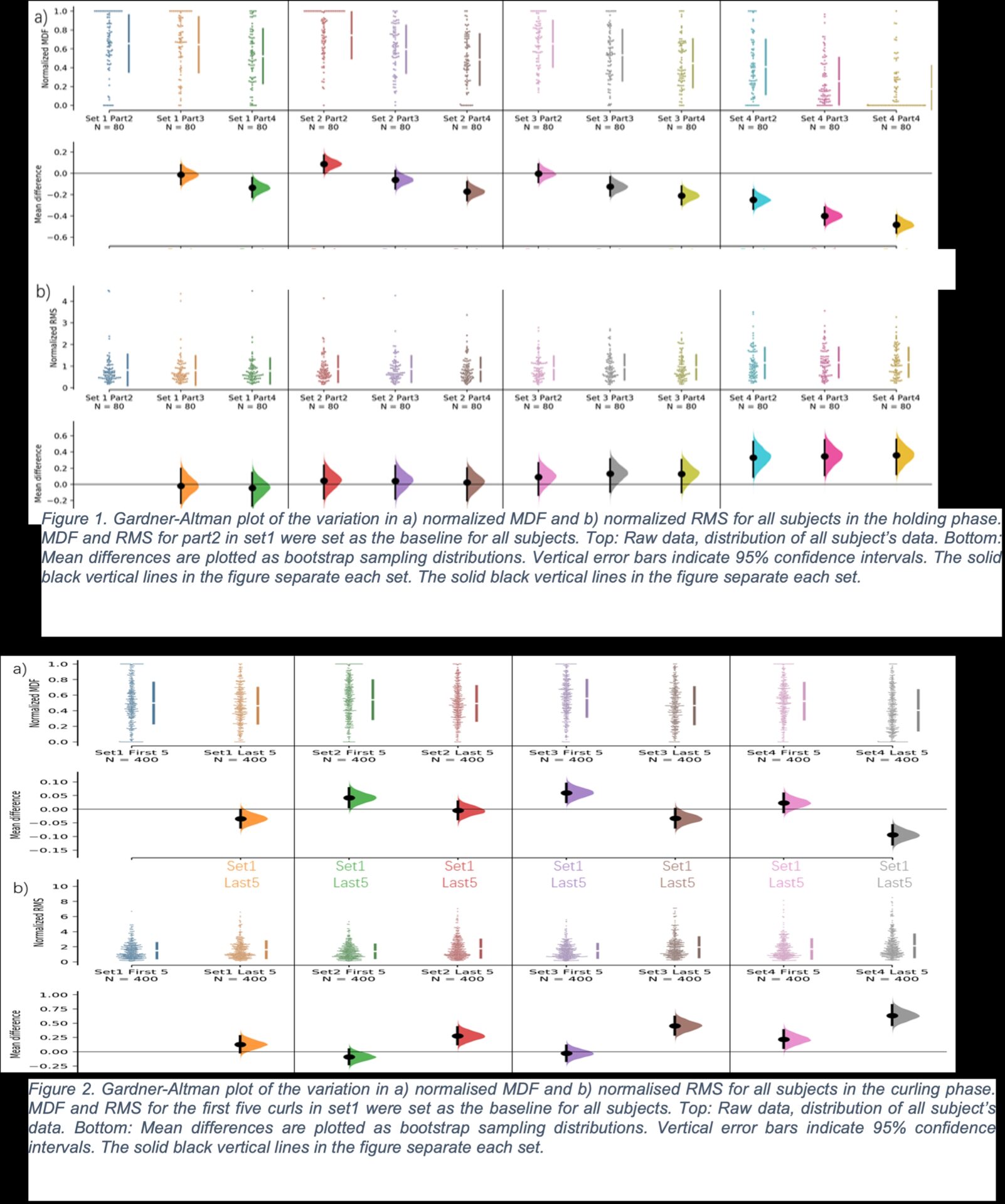Intro and aim
Muscle fatigue is a common phenomenon with clinical implications. In healthy individuals, it reduces muscle power, causes discomfort and pain, impairs muscle function, and reduces overall performance. In various disorders, including neurological, muscular, and cardiovascular conditions, it worsens, reducing an individual’s ability to perform activities of daily living (ADLs). It is widely recognized that most ADLs are dynamic movements involving non-isometric muscle contractions. Current methods to assess fatigue include measuring changes in force production using measures of maximum voluntary contraction (MVC) and power output along with a subjective Borg RPE scale. Moreover, current methods utilise an isometric task and only take measurements at the end of a fatiguing task; both these approaches lack real-time insights during muscle activity, raising questions about the suitability of current methods for tracking muscle fatigue in such contexts. This highlights the need for improved, and clinically useful, methods to detect and quantify fatigue. Assessing muscle fatigue using metabolic biomarkers is more reliable but is currently done invasively, limiting its applicability. However, surface electromyography (sEMG) is widely used in muscle fatigue detection, offering advantages such as non-invasiveness, applicability in situ, real-time muscle monitoring, and the ability to monitor fatigue of specific muscles which can overcome the limitations of current methods. Although sEMG is still used to detect fatigue at the end of isometric tasks, there is growing interest in its potential to detect fatigue during dynamic tasks.
We designed a two features method (TFM) that simultaneously uses both median frequency (MDF) and root mean square (RMS) to detect muscle fatigue during a dynamic task.
Method
We assessed fatigue using TFM, in 14 healthy subjects (5 females) aged 19-39, height 170.25±8.82 cm, weight 68.4±11.63kg in both dynamic and static tasks. Fatigue perception was recorded using the Borg RPE scale. Additionally, 6 participants underwent pre- and post-task MVC measurements by performing an elbow flexion with a 90-degree elbow joint posture. Participants performed tasks without restrictions, with the dynamic task comprising 15 dumbbell curls in 30 seconds, and the static task involving a 30-second duration of holding a dumbbell with the elbow at 90 degrees.
Result
During both static, and dynamic tasks the Borg RPE scale showed a significant increase between set 1 and set 4. A comparison of MVC before and after the fatiguing task showed a significant decrease after the whole task. When considering data from all subjects, in both the static and dynamic phase, the TFM showed a concurrent decrease in MDF and increase in RMS. The difference between the mean values of both features was most significant in set 4.
Conclusion
Our research introduces an innovative, non-invasive, quantitative method for detecting muscle fatigue, applicable to both static and dynamic movements. This significant step forward in measuring fatigue enables us to not only monitor the occurrence of muscle fatigue but also to observe fatiguability. Critically, TFM identifies fatigue in active muscles prior to an individual’s perception of fatigue.

